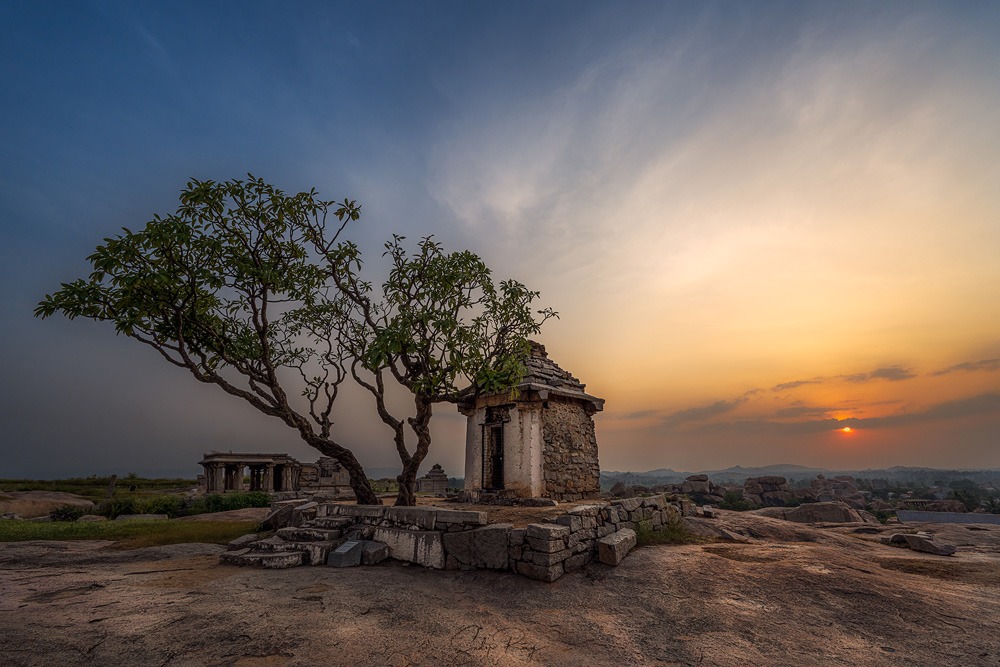
Hampi: Recollections of A Forgotten Empire
It was one of those quiet evenings, when the sun had just set but the stars were yet to shine, and the twilight had set in. The setting was perfect for recalling the glorious history of Hampi, as was perfectly prescribed by the eminent Bengali novelist Sharadindu Bandyopadhyay in his classic “Tungabhadrar Teere”. In the novel, he urged his readers to stand near the confluence of the Krishna and Tungabhadra rivers, lend an ear, and listen how Tungabhadra whispers to Krishna as she recounts the chronicles of her long-lost illustrious past.
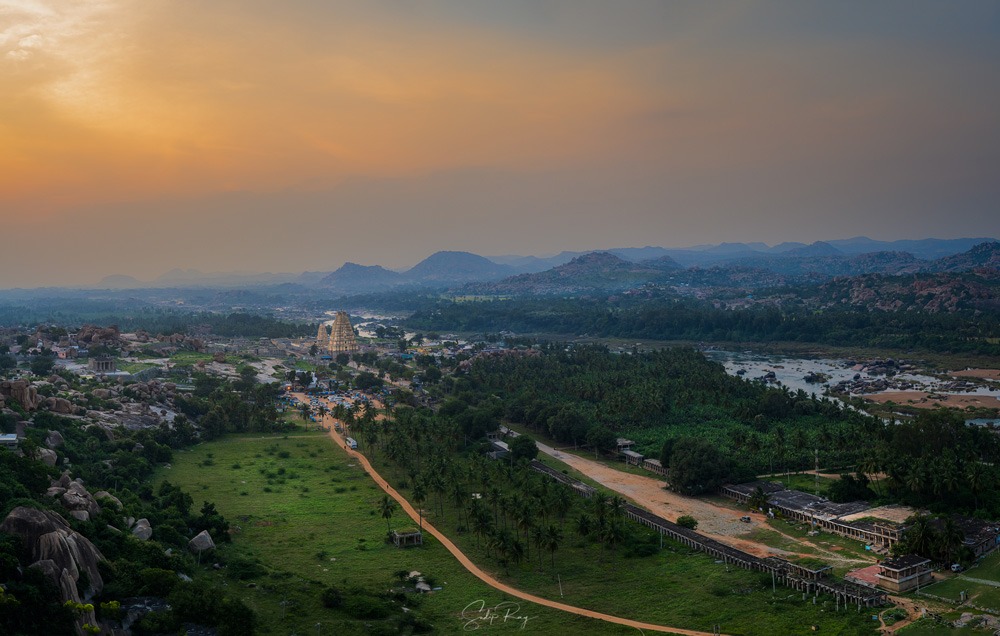
Contrarily, we were however reclined atop the Matanga Hill, one of Hampi’s highest points. It was our last evening in Hampi. Both elated and exhausted, the memories of rummaging through Hampi’s ruins for the past two days kept coming back to us. As far as our eyes could reach, the lush panorama of Hampi, nourished by the Tungabhadra, spread far and wide. The iconic Virupaksha Temple glistened under the fading sun rays. The sounds of ‘sandhya stotram’ and bells reverberated throughout Hampi. A gentle wind blew over the mounds of rocks, fetching along the whiff of a bygone era. And down the hill, the Tungabhadra continued flowing, as it has been flowing for the past who-knows-how-many years and witnessing the rise and fall of a saga called Vijayanagara.
In a word, Hampi is an enigma. Its appeal can hardly be described in words. It casts a spell even before you travel there, captivates you while you are treading through its innumerable wrecks, and its charm even continues to enchant you long after you have returned home. Its past is shaped both by the events of myth and history. Every corner in Hampi is laced with stories from legends, mythologies, and history. And, here lies the magic of Hampi.
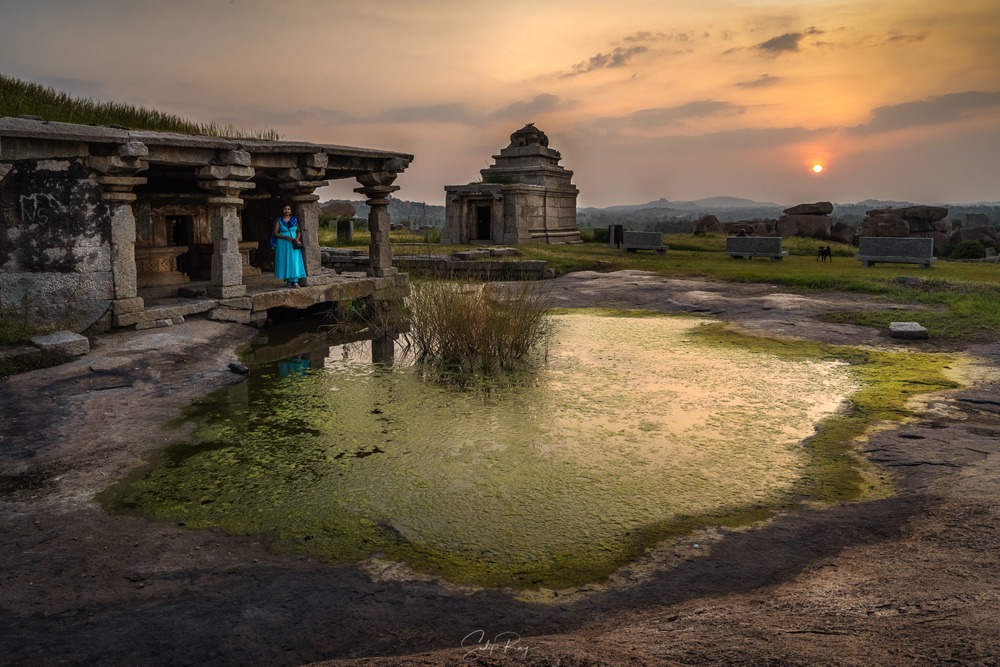
Hampi of the legends:
Many moons ago, a divine love had sparked the saga of Hampi. The ball started to roll when Siva left his abode at Kailasa and started meditating on a hill near Hampi. Pampa (as Parvati is known locally), the reincarnation of Siva’s previous consort Sati, soon fell in love with him. Siva was oblivious to Pampa’s yearning for him, and remained engrossed in his meditation. Noticing Pampa’s dilemma, Indra, the king of gods, took matters in his own hands. He sent Kama, the god of love and desire, for awakening Siva from his meditation. Things, however, went south. No sooner had Kama shot an arrow of desire than Siva burnt Kama to ashes by opening his mighty third eye. For this, Shiva is venerated in Hampi as “Virupaksha”, one with the oblique eyes.
On the other hand, Pampa was not fazed by such wry turn of events. Now, she decided to follow the footsteps of her beloved, embraced a yogic lifestyle, and began her ‘tapasya’. Now, it was Siva’s turn to lose his heart. Impressed by her unflinching meditation and dedication, Siva finally agreed to marry Pampa.
Pampa and Siva tied the knot on the hill. On this joyous occasion, the gods showered gold over this hill. It turned golden, and came to be known as Hemkuta or the golden hill. Siva was now called Pampapati or husband of Pampa, while the place itself was named Pampakshetra or land of Pampa. As time elapsed, the name Pampakshetra was contorted first into the Kannada word Hampa and finally to Hampi.
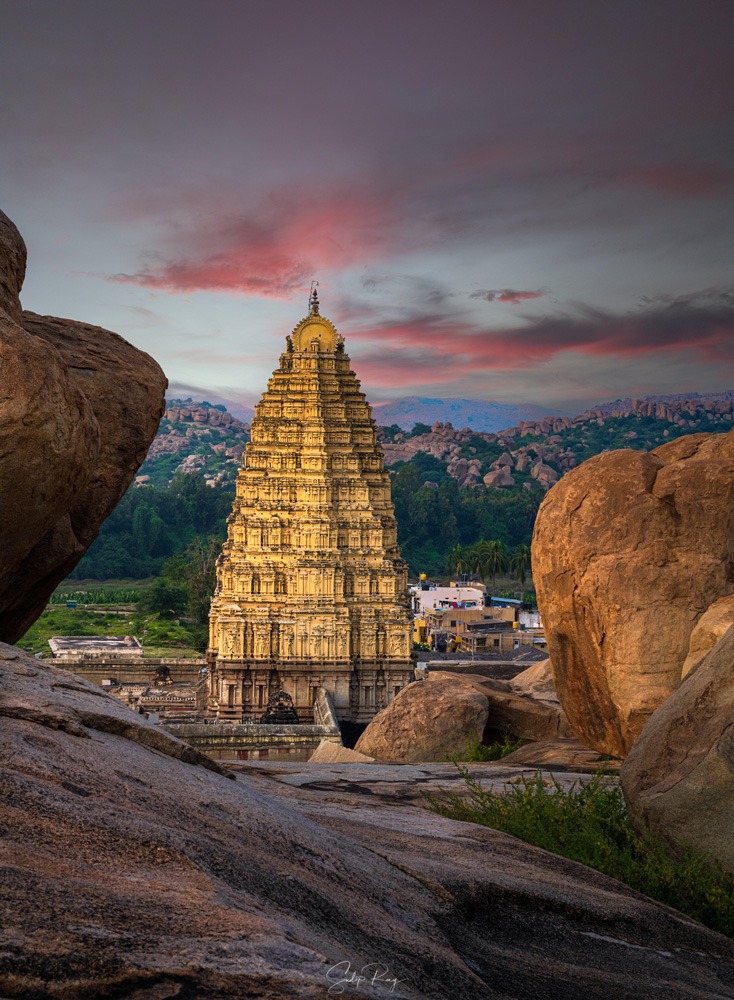
Hampi of the Ramayana:
Hampi’s chronicle later continued in the pages of the epic Ramayana. Hampi roughly comprised of Kishkindha, the kingdom of the Vanara or monkeys. Kishkindha was ruled by Bali, who was caught into a bitter feud with his younger brother, Sugriva. The two siblings fought against one another, throwing boulders at each other. It is believed that, the rocky terrain of Hampi resulted from this boulder fight between Bali and Sugriva. During this time, Rama arrived in Kishkindha while searching for his wife, Sita who was abducted by Lanka’s king Ravana. Rama lent his help to Sugriva in defeating Bali and ascending the throne of Kishkindha. As a token of his gratitude, Sugriva aided Rama by providing his vast Vanara army to fight against the powerful Ravana. Hampi is dotted with places which are connected with Ramayana, such as Anjanadri Hill where Hanuman, the monkey god, was born, Sugriva’s Cave where Sugriva hid from Bali, and Malyavanta Hill where Rama temporarily resided for four months before embarking on his expedition to save Sita.
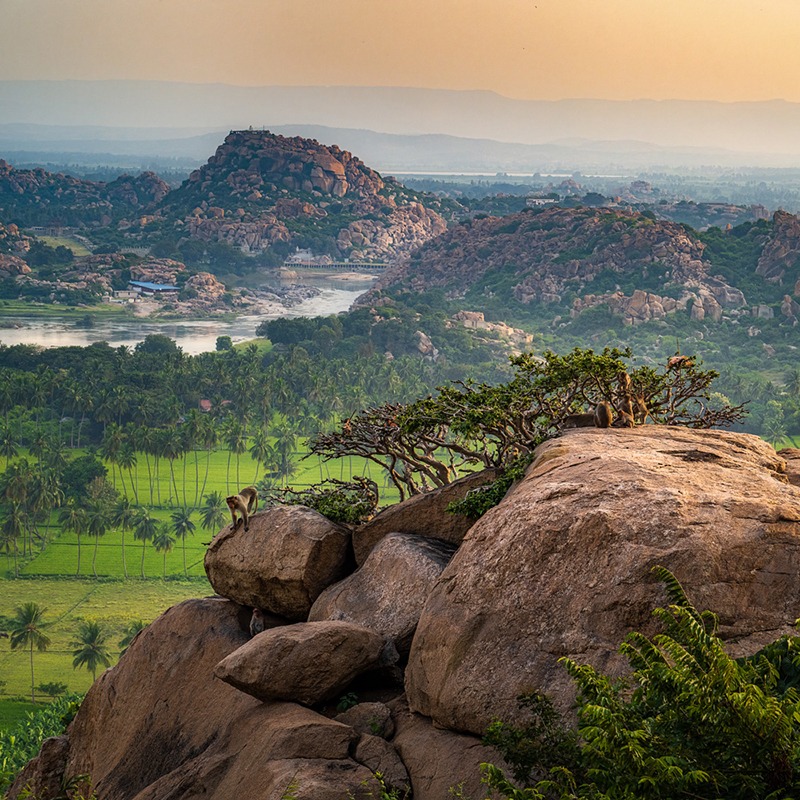
Hampi in History-
It was 1336 CE. Two brothers, Harihara and Bukka, declared independence from the Delhi Sultanate and laid down the foundation of an empire on the banks of the Tungabhadra. At first, Anegundi was the capital of this newborn kingdom. Later, for strategic reasons, it was shifted to Hampi which was fittingly called Vijayanagara or the city of victory. Over the span of 200 years, Vijayanagara evolved into a powerful and magnificent empire under the able rule of five dynasties. Thanks to the military feats of Devaraya I, Devaraya II, and Krishnadevaraya, the boundaries of Vijayanagara spread far and wide.
In addition to military marvels, Vijayanagara also excelled exceptionally both culturally and economically. Vijayanagara was the second largest city in the medieval world. It was also regarded as the richest city in the contemporary world. Several foreign travellers visited Vijayanagara and praised it unfailingly in their travel accounts. Some even compared Vijayanagara with Rome! The city was adorned with majestic palaces and exquisite temples. It became a hub of poets, scholars, and artists, most of whom received royal patronage.

But, as they say, ‘all good things must come to an end’. Curtains were drawn on the glorious chapter of the Vijayanagara Empire in 1565 CE. A nexus of the five Deccan Sultanates completely routed the Vijayanagara army in a battle fought at Talikota. Following the decisive defeat, the city was mercilessly ravaged and plundered. For six months, palaces were burnt, temples razed to the ground, idols desecrated, and civilians murdered brutally. The immense riches were looted brazenly. The Sultanates spared no efforts to erase the name of Vijayanagara from the pages of history. Thus ended the saga of the Vijayanagara Empire.
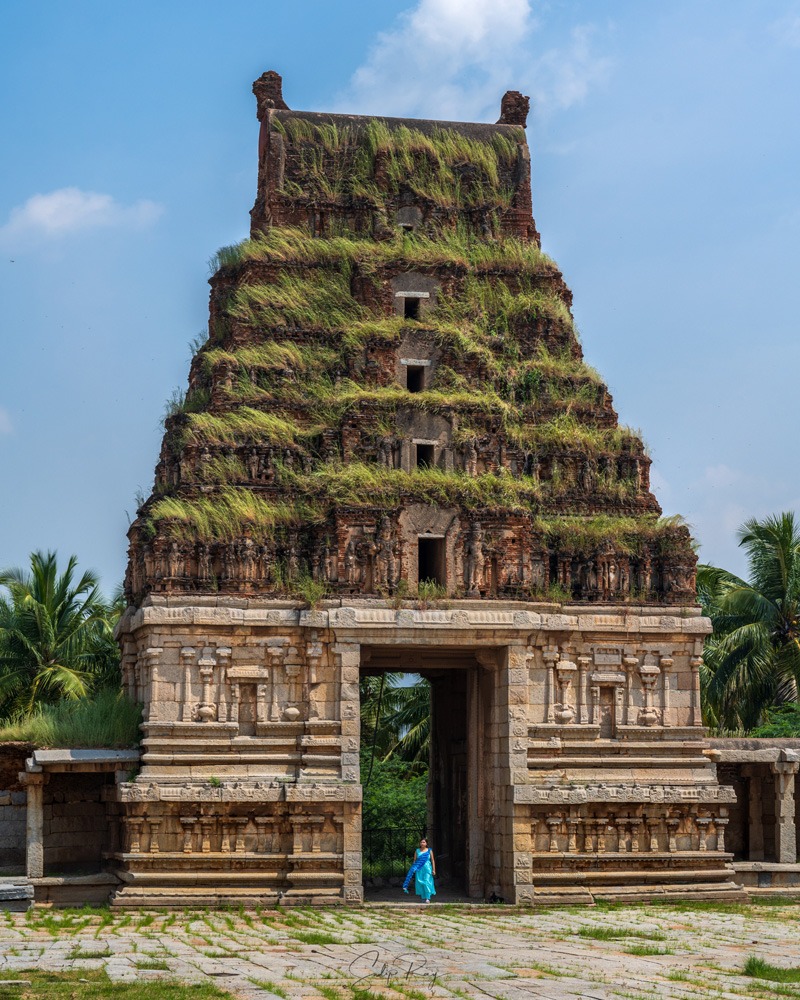
Hampi in the present-
Today, Hampi is dabbed with numerous relics, which serve as a daily reminder of its illustrious past. The Hampi Group of Monuments is now enlisted as UNESCO World Heritage Site. However, exploring the ruins of Hampi will give you a mixed bag of feelings. As you tread the corridors of the exceptionally beautiful Vijaya Vittala Temple, Hazara Rama Temple or the Krishna Temple, you will be beaming and crestfallen at the same time. While the empty ‘mantapas’ of Achyutaraya Temple and Pattabhirama Temple will make your heart heavy. The grand scale of the temples along with their architectural excellence and sculptural brilliance will make you amazed and proud of the heritage of our country. Simultaneously, you will be heartbroken at the sight of wrecked Gopurams and shattered statues.
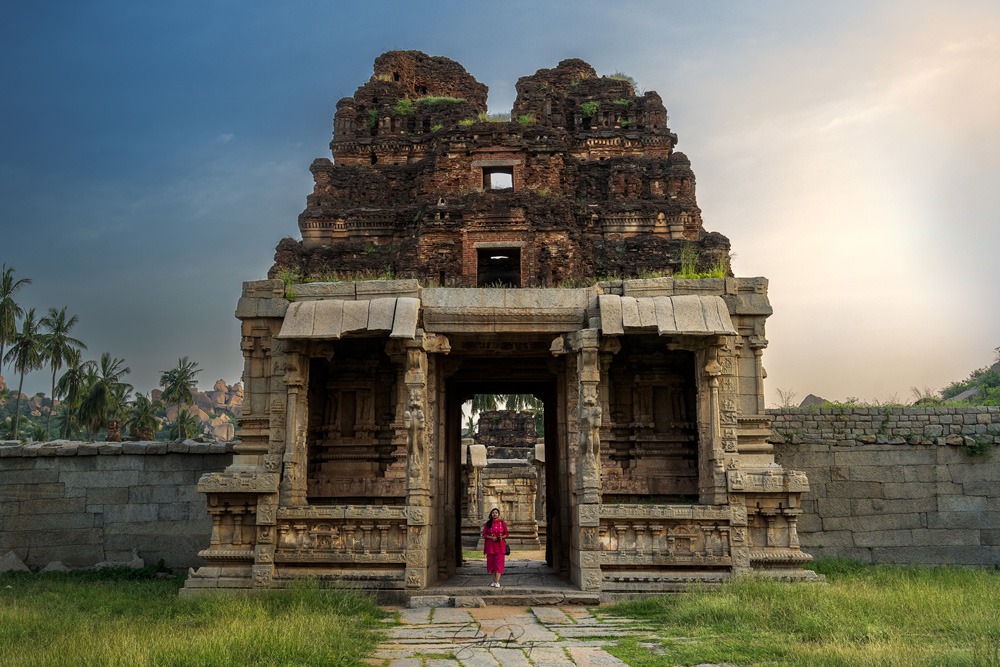
In fact, Hampi seemed to be covered in a veil of melancholy. Even now, Hampi’s ruins appear to lament its sad end. The lament will even seep into your heart, making you weary and also wander how this glorious empire vanished owing to one single defeat. The iconic rocks and boulders of Hampi resemble forlorn figures, and Tungabhadra seems a river drowned in sorrow. If only the river and rocks could speak! They carry along with them so many tales and countless incidents.
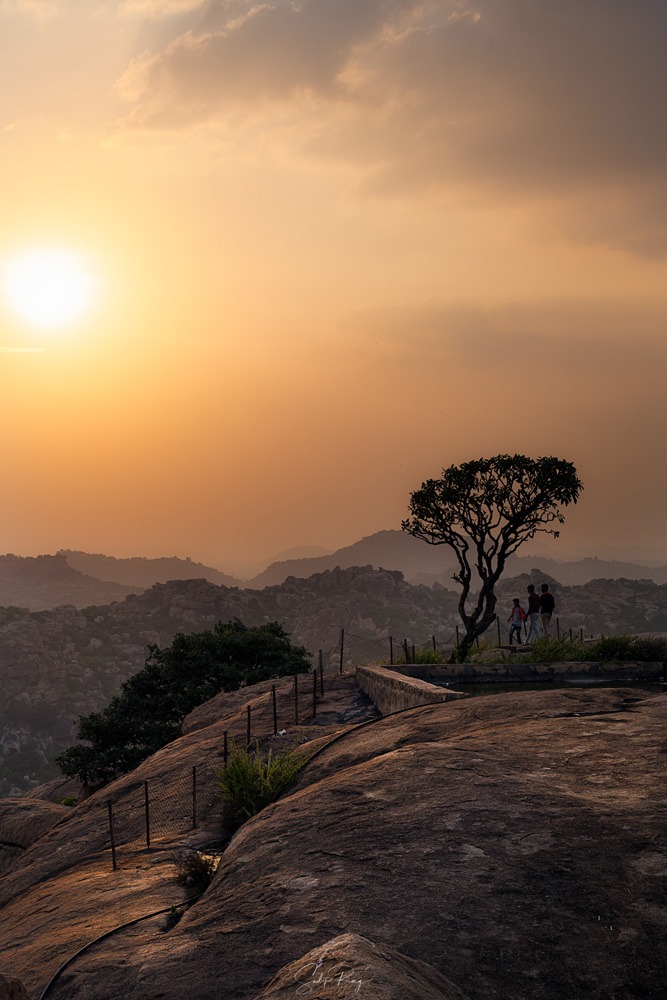
The gloomy evening had set in, with the full moon of ‘Kojagari’ shining brightly above the Virupaksha Temple. And silence descended upon Hampi ‘like the evening dew’. We climbed down the shaggy trail of the Matanga Hill. It was time to call it a day. While returning, we took the same winding road that we travelled in the morning. One by one, we drove by the Hemkuta Hill, Ganesha monoliths, Krishna Temple, Narasimha statue. How wistful we felt, glancing upon the monuments one last time. The breeze was still there, flurrying across the monuments as if to keep their solitude at bay. The breeze touched our faces, reminding us gently that so many stories have yet been left untold. We were leaving Hampi for now, but also leaving pieces of our hearts at Hampi with a promise to return.
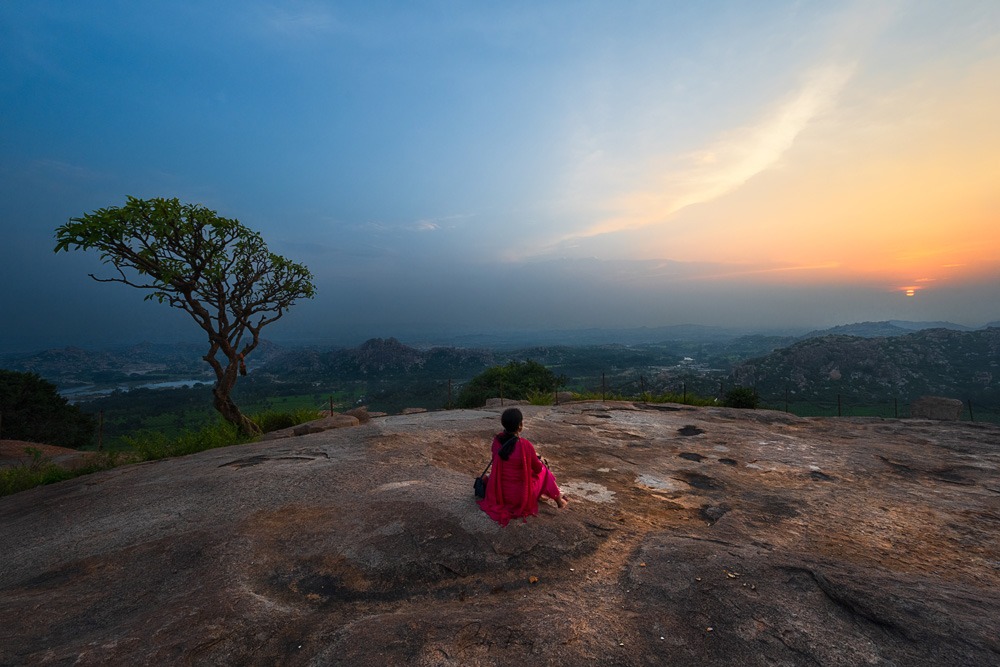


Post a comment